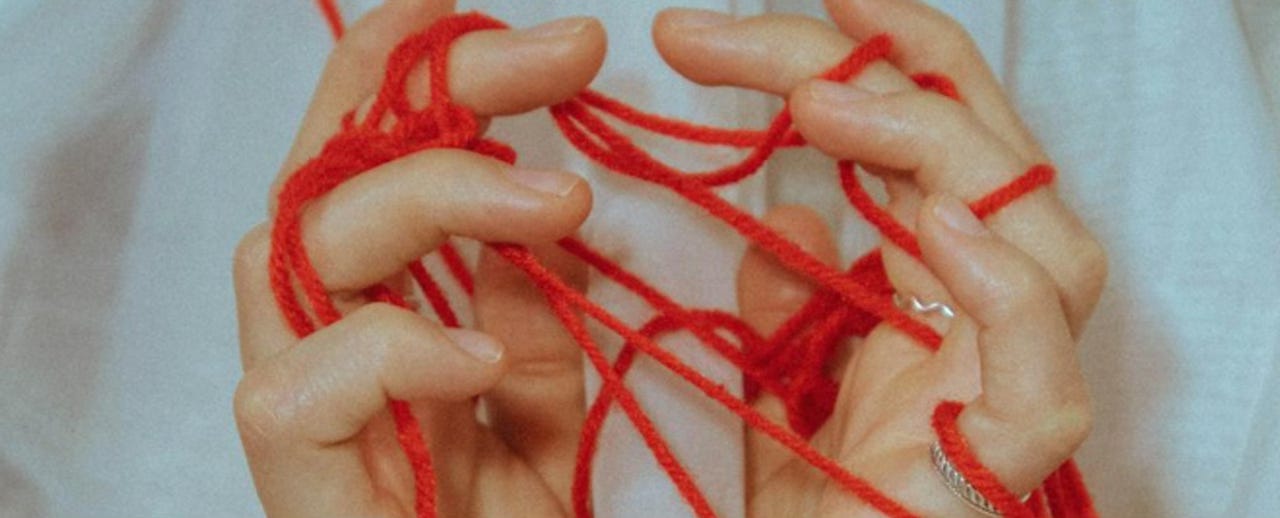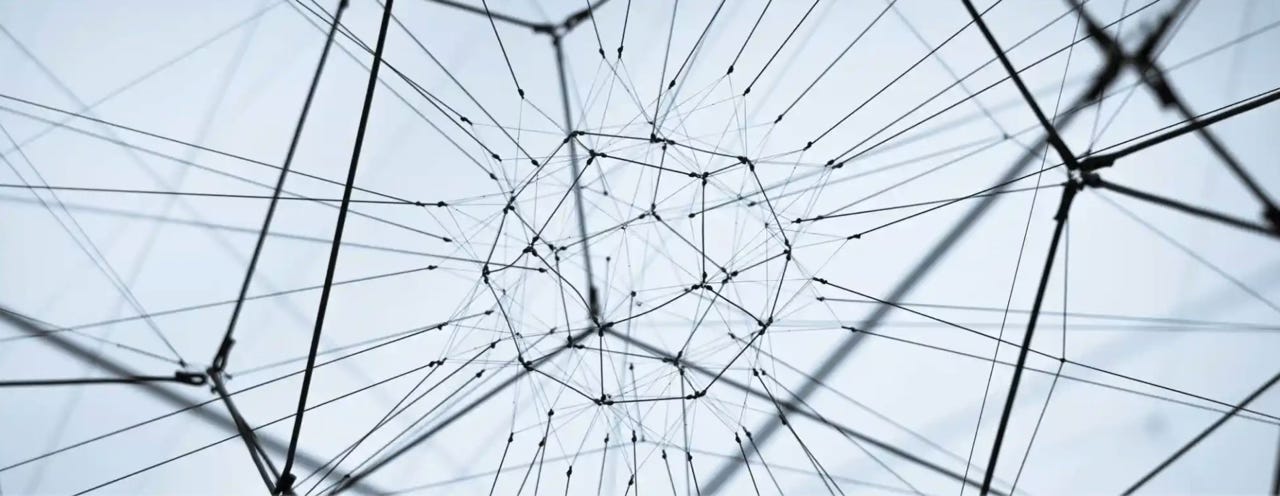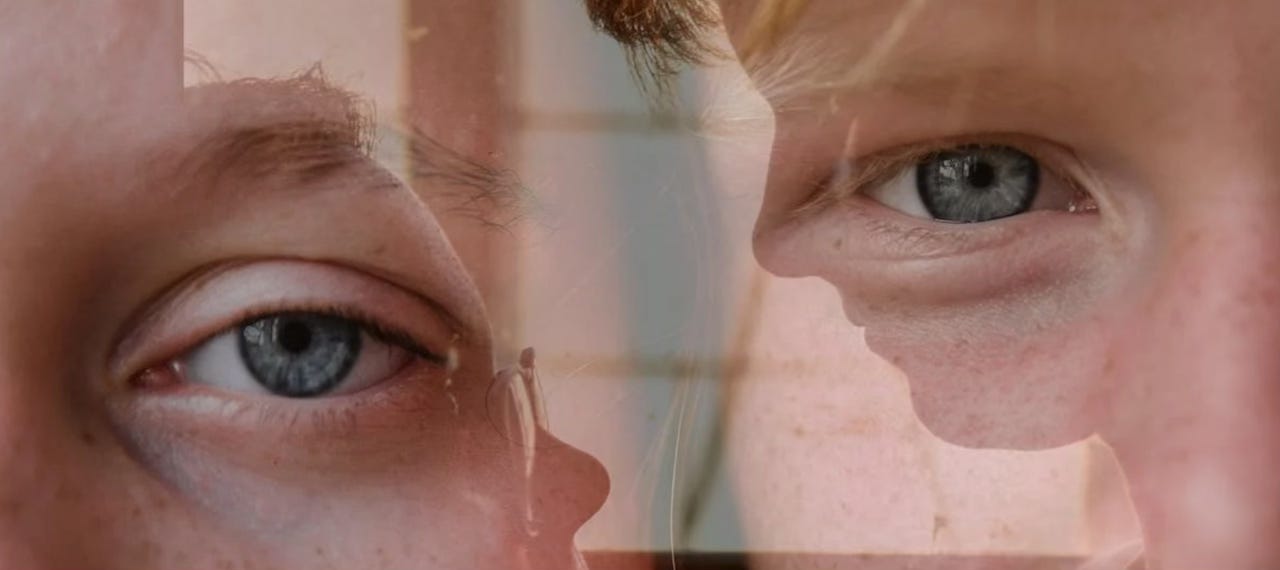🍄 AudioDose Alice on Sonic Mushrooms: Listen to Knowing
🎧 Alice podcasts
📘 Alice books
Our interconnected world, a pulsating web of interactions, has turned resonance into a governing principle. What was once buried deep within, relegated to the unconscious or isolated societies, now stirs, rising to a shared consciousness. Information—both signal and reception—threads through it all, like language, a conversation unfolding in waves. And with each exchange, meaning is born. Hello, we’re Alice and we are always in a state of wander.
Nature does not have a goal, it evolves
Consider "morphogenesis": biology’s exploration of how forms arise, how life’s architecture takes shape. Derived from "morphology" and "genesis," it’s a continual creation. Within cells, morphogenesis is a dialogue, like syntax building meaning, the organism translating unseen signals into embodied structure. It’s not merely a metaphor; it’s a creative process, sustained by ambiguity—where deterministic clarity is replaced by potential. Biology, like physics, is abandoning mechanistic determinism, loosening into a more dynamic, emergent creativity.
"Morpho which is from morphology and genesis which is to generate, to create, it’s the creation of morphology or form. This is a focus of study in biology, to try to get to the root of this process of how information turns into form. Meaning is what emerges from a conversation taking place within an organism, within the cells of an organism, the embodied form of the organism itself. Morphogenesis is the emergence of meaning from a conversation that is taking place within these networks, they are like languages. What I have realized is that in order for a process to be creative, there has to be ambiguity—the ambiguity keeps open the possibilities so that you have different outcomes according to context. And so, this whole idea of determinism, mechanical determinism is, I would say, about to disappear from biology, it disappeared from physics with quantum mechanics nearly 100 years ago, but biology has clung to molecular mechanical determinism. And I think it is about to go the same way as physical determinism in the 1920s. It needs to be abandoned and replaced by something which is much more fluid, much more open, much more creative, much more consistent with reality as a creative process, and much closer to culture because it’s connected with conversation. Morphogenesis is happening everywhere. And it’s a process that we’re trying to understand. I think it’s very exciting, the convergences of understanding in all these different domains. It brings together the sciences and healing, the humanities and technology, everything is now brought together within this realm of creative innovation. Morphogenesis is also becoming quite a general issue in a social order because here we have an information society and we want to turn that information into appropriate form, appropriate structures and dynamics.”—Brian Goodwin PhD, Alice Archive Library, Visionary Biologist, Advocate of Holistic Science, Understanding organisms as dynamic wholes
“Morphic resonance involves a memory in nature. It's a bit like Jung's idea of the collective unconscious. Everything evolves, including the regularities of nature. Every kind of thing has its own memory. Each species of animal, each species of plant, even crystals have a kind of memory. Molecules too. The whole of nature essentially depends on a kind of memory, and each kind of thing has its own sort of memory. Each individual draws on the collective memory and contributes to it. That's one aspect of the theory, the memory in nature is the morphic resonance aspect. The other aspect of the theory is the idea of morphic fields, which are the way in which this memory is expressed. Each species has its own fields that govern the form of the organisms as they develop. The morphic fields are not just for the organization of individuals, they're also for the organization of societies. Each social group has its own field. This has a lot to say about the way in which people interact within it. If you want to change social groups, you have to change the whole field, there's no use just changing individuals. The whole is more than the sum of its parts.”—Rupert Sheldrake, PhD Alice Archive Library, Biologist, Author, best known for his hypothesis of Morphic Resonance
The return to relational thinking
Neil Theise, MD, has carved a singular path through the world of medical science, his work tracing the fluid connections threading through human anatomy and consciousness alike. As a professor of pathology at NYU Grossman School of Medicine, he stands on the frontiers of adult stem cell plasticity and has charted the hidden architecture of the human interstitium—a previously unseen, networked organ, as ubiquitous as it is invisible. The interstitium, he discovered, is a fractal landscape of fluid-filled channels, an anatomical superhighway spanning every corner of the body, missed not because it was hidden, but because our tools, both literal and conceptual, couldn’t yet reveal it. Recent advances, like endoscopic microscopes capable of peering into living tissue, have redefined our view of human anatomy as a dynamic, living system rather than a disassembled collection of parts. Dr. Theise's work straddles the boundary between traditional medicine and integrative science, opening doors to fields as diverse as consciousness studies and the nuanced spaces where science and spirituality intersect.
The return to relational thinking reflects a profound shift in science, where Indigenous knowledge, rhizomes and complexity theory all echo the same call: that isolation is illusionary, and our survival—our very health—depends on embracing the networks that bind us, seeing the world not as objects in space but as threads in a tapestry, resilient and profoundly connected.
Embodiment, we are one
Embodiment science is evolving, driven by discoveries like mirror neurons, which might form a foundation for human empathy, interdependence, and shared consciousness. When we observe another’s movement, our mirror neurons ignite, grounding us in unconditioned awareness. There is an awakening within these synaptic echoes—a meta-perspective that senses and shifts with another’s state, enhancing adaptability, connection, and empathy.
Why is imitation so powerful? Scientists believe imitation functions through a system of mirror neurons which exist in the brains of all primates. As we watch another person perform an action, mirror neurons fire throughout the motor cortex to map that movement onto our own bodies. This happens whenever we see (or hear) human movement, whether it’s an acrobat, a yoga teacher, or a teenager dancing on TikTok. In studies on unconscious imitation, researchers have found that strangers who subconsciously mirror one another’s body posture and gestures during their first meeting also report more mutual positive feelings. Activities involving synchronized movement can create powerful feelings of unity, and these practices are often the focus for feelings of group solidarity.
“Mirror neurons are essential for mimicry and also for empathy, giving us the ability not only to copy the complex tasks performed by others, but also to experience the emotions that person must be feeling. Mirror neurons are essential for our evolution as human beings, since cooperation is essential for holding the tribe together.”—Michio Kaku PhD, Alice Archive Library, Theoretical Physicist, Bestselling Author, Public Speaker, Futurist, and Popularizer of science
This empathic network, emerging from our mirror neurons, reveals our innate capacity for transference. When we connect with others, we resonate with a unified awareness, a sense that perhaps, through this shared language of the mind, we edge closer to awakening a collective consciousness. Perhaps, in this meta-perspective, our neural activity hints at what our society has been longing for: the ability to see ourselves as one intertwined whole. And so, through morphogenesis, resonance, and the quiet language of mirror neurons, we find not only a scientific frontier but a path to an awakened, interconnected world.
What Else We Are Wandering
Mirror neuron activity predicts people’s decision-making in moral dilemmas: The results of a UCLA study suggest that scientists could make a good guess based on how the brain responds when people watch someone else experience pain. The study found that those responses predict whether people will be inclined to avoid causing harm to others when facing moral dilemmas. “The findings give us a glimpse into what is the nature of morality,” said Dr. Marco Iacoboni, director of the Neuromodulation Lab at UCLA’s Ahmanson-Lovelace Brain Mapping Center and the study’s senior author. “This is a foundational question to understand ourselves, and to understand how the brain shapes our own nature.”
Invisible Landscapes: Scientists' recent discovery of a "new" part of the human body, the interstitium, is an invitation to think differently about our relationship with the world at large. How can we activate and apply this new word, interstitium, to harness its meaning and power beyond biology? What will it take to find ways of seeing, languaging and remunerating interstitionary work, so our systems have a chance at correcting and finding balance? No one sector, industry or organization will be able to solve the wicked problems we face in challenges like climate or poverty or corruption. So the last questions are, when can we start, and are you in?
Using bioelectricity to study how cells make collective decisions about growth and shape: Mike Levin, Ph.D. talks about his interests in bioelectricity, regenerative medicine, and the ways in which organisms develop and regenerate with the help of bioelectric information. “I think all the different projects that my lab is working on link together in an effort to answer the question, ‘How do biological systems store and process spatial and temporal information to behave adaptively, build large functional structures, and resist challenge?’” says Levin.
BeAnotherLab works at the intersection of art, science, and technology, questioning hierarchies between these different ways of knowing. They approach them as complementary, overlapping bodies of knowledge. Driven by an action-research approach, the Lab has developed a range of methodologies for interacting with individuals from communities that face different types of social prejudice, and on how to present this content to a general audience.
Craving more?
📘 Alice in Futureland books
🎧 Alice in Futureland podcasts
Thanks for tuning in.
For more wanderings, become an Alice in Futureland subscriber—it's free.
Invite your friends to this mad tea party and let's see how many things we can learn before breakfast.
©2024 Alice in Futureland











Love the idea of mirroring as a way "to see ourselves as one intertwined whole." Also makes me realize that by doing so, we are providing the same gift to the person we are mirroring, letting them see themselves as part of a greater whole too.